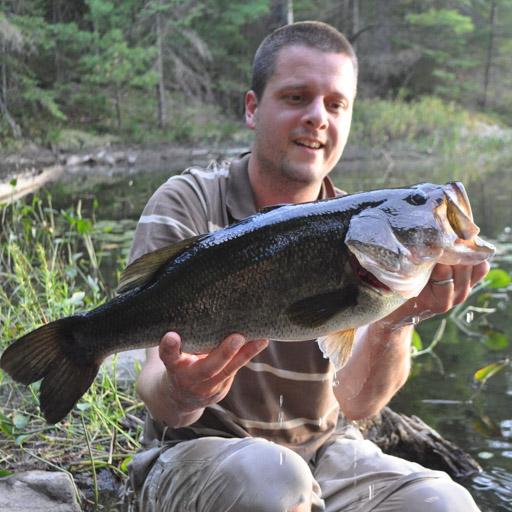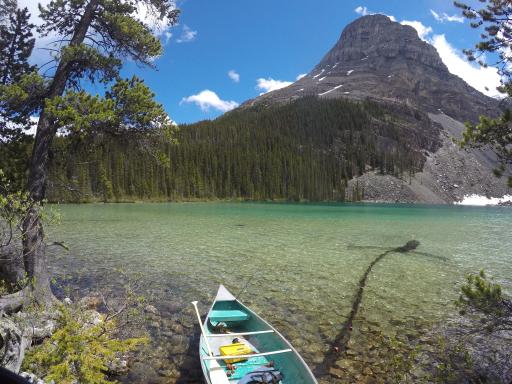
Dylan Fraser, PhD
- Associate Professor, Biology
Are you the profile owner?
Sign in to editResearch areas: Evolutionary applications to conservation biology; adaptation to environmental change; fisheries and wildlife management; population, conservation and quantitative genetics; molecular ecology.
Contact information
Email:
Website:
Biography
Education
PhD, NSERC Scholar (Université Laval)
Postdoc, NSERC Scholar (Dalhousie University)
Research interests
Our laboratory seeks to understand how ecology, evolution and genetics interact to generate and sustain biodiversity, how human activities alter this diversity, and how this collective knowledge can be applied towards more effective biodiversity conservation in a variety of contexts. To date, this research has involved a combination of field, laboratory and molecular studies on fishes, as well as data synthesis using meta-analysis.

One of our field research sites, this one is in Yoho National Park
Teaching activities
Courses
BIOL 330 Vertebrate Biology
BIOL 457 Applied Ecology and Conservation Biology
BIOL 670 Scientific Communication
Selected publications
Full list of publications: www.dylanfraser.com/publications/
*Supervised students
*Zastavniouk C (MSc), LK Weir, DJ Fraser (2017) The evolutionary consequences of habitat fragmentation: body morphology and colouration differentiation among brook trout populations of varying size. Ecology and Evolution accepted.
*Yates MC (PhD), TA Bernos* (MSc), DJ Fraser (2017) A critical assessment of estimating census population size from genetic population size (and vice versa) in three fishes. Evolutionary Applications, accepted.
*Marin K (MSc), A Coon, DJ Fraser (2017) Traditional ecological knowledge reveals the extent of sympatric lake trout diversity and ecological preferences. Ecology and Society, accepted.
*Harbicht AB (PhD), T Castro-Santos, WR Ardren, DJ Fraser (2017) Novel,continuous monitoring of fine-scale movement in aquatic species using fixed-position radio-telemetry arrays and random forest location fingerprinting. Methods in Ecology and Evolution, accepted.
*Brunsdon E (MSc), JWA Grant, DJ Fraser, WR Ardren (2017) Dispersal and density-dependent growth of Atlantic salmon (Salmo salar) juveniles: clumped vs. dispersed stocking. Canadian Journal of Fisheries and Aquatic Sciences accepted.
*Wells ZRR (MSc), L McDonnell, LC Chapman, DJ Fraser (2016) Limited variability in upper thermal tolerance among pure and hybrid populations of a cold water fish. Conservation Physiology accepted.
*Marin K (MSc), A Coon, R Carson (R. Assoc)*, PV Debes (Postdoc)*, DJ Fraser (2016) Striking phenotypic variation yet low genetic differentiation among sympatric lake trout. PLOS One.
*Bernos T (MSc), DJ Fraser (2016) Spatiotemporal relationship between adult census size and genetic population size across a wide population size gradient. Molecular Ecology 25: 4452-4557.
*Wood JLA (PhD), MC Yates (PhD)*, DJ Fraser (2016) Are selection and heritability related to population size in nature?Meta-analysis and conservation implications. Evolutionary Applications 9: 640-657.
*Clarke CN (MSc), DJ Fraser, CF Purchase (2016) Life-long and carry-over effects of early captive exposure in a recovery program for Atlantic salmon. Animal Conservation online early
*Wood JLA (PhD), D Tezel (BSc)*, D Joyal (BSc)*,DJ Fraser (2015) Population size is weakly related to quantitative genetic variation and trait differentiation in a stream fish. Evolution 69: 2303-2318.
*Wood JLA (PhD), DJ Fraser (2015) Similar plastic responses to elevated temperature among different sized brook trout populations. Ecology 96: 1010-1019.
*Harbicht AB (MSc), CC Wilson, DJ Fraser (2014) Does human-induced hybridization have long-term genetic effects? Empirical testing with domesticated, wild and hybridized fish populations. Evolutionary Applications 7:1180-1191.
Fraser DJ, PV Debes (Postdoc)*, L Bernatchez, JAHutchings (2014) Population size, habitat fragmentation, and the nature of adaptive variation in a stream fish. Proceedings of the Royal Society of London Biological Sciences 281:20140370.


